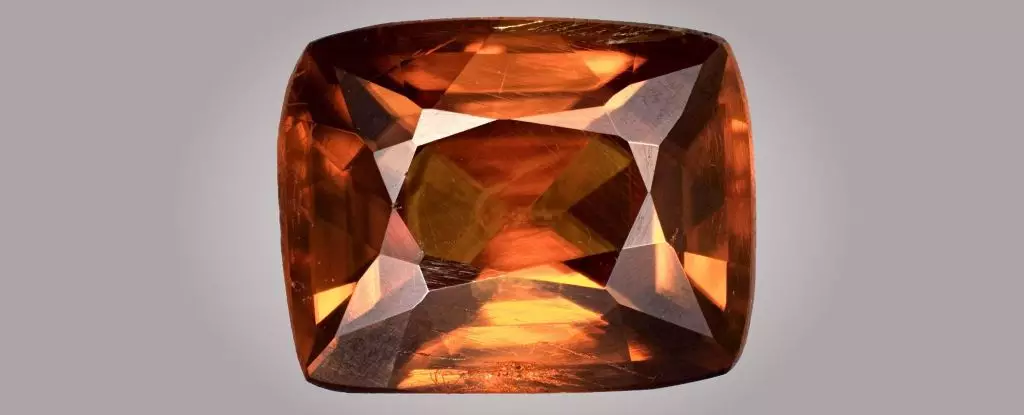In the vast world of mineralogy, the word “rare” often loses its meaning amid the numerous gemstones and rocks discovered and cataloged over time. However, a mineral that shatters all notions of rarity is kyawthuite (pronounced cha-too-ite), a gem so unique that only one specimen has ever been discovered globally. This diminutive mineral, weighing a mere 1.61 carats or approximately a third of a gram, carries implications that extend far beyond its diminutive size and innocuous appearance. Initially mistaken for amber or topaz, this tawny-hued gem has turned out to be a geological enigma that captivates both scientists and gem enthusiasts alike.
The incredible story of kyawthuite began in 2010 in Chaung-gyi, a small town in Myanmar, where gemologist Kyaw Thu stumbled upon the rare specimen at a local market. Initially believing it to be a more common mineral called scheelite, Thu’s curiosity was piqued upon examining the stone more closely after he had faceted it. This seemingly simple mistake marked the beginning of the mineral’s journey from obscurity to fame. After being unable to categorize it through conventional methods, Thu decided to send the specimen to the Gemological Institute of America (GIA) Laboratory in Bangkok for further examination. The mineralogists at GIA made a groundbreaking discovery: the formula Bi3+Sb5+O4, a molecular arrangement that is untouched by nature prior to this finding. According to Thu, this singularity elevates kyawthuite from a mere mineral to an object of immense scientific curiosity.
One of the most striking elements of kyawthuite is its vibrant saturated orange color, which comes with a captivating red overtone and unique characteristics such as a white streak left behind when the gem is dragged against a coarse surface. Its hollow, tube-like inclusions known as “en echelon veins” serve as artefacts of the stresses it endured during its formation, suggesting a fascinating history rooted in natural geological processes. The current consensus among geologists is that kyawthuite is likely of igneous origin, a product found within the common volcanic rock pegmatite. This type of rock, akin to a fruit cake in its chaotic mix of minerals, is known for housing larger crystals, making it an excellent host for rare gems.
Aqua Tidbits and Illustrative Chemistry
Further examination reveals that traces of titanium, niobium, tungsten, and even uranium are present within kyawthuite, suggesting a complex formation process influenced by high temperatures akin to those found in cooling magma. Such complexities hint at the possibility of even more extraordinary conditions leading to the creation of kyawthuite, although much about its formation remains cloaked in mystery.
As the only known specimen of kyawthuite, its value transcends the material realm, landing it the designation of “priceless.” In contrast, the second-rarest gem, painite, fetches a price of approximately $50,000 to $60,000 per carat, rendering kyawthuite’s unattainable status noteworthy. The unique qualities of this gem have enshrined it in cultural importance, drawing the attention of historians, gem collectors, and scientists alike.
At present, kyawthuite rests safely within the National History Museum of Los Angeles County, where it serves as a testament to the wonders of natural formations and the mysteries that lie in the Earth’s crust. Its story embodies the thrill of discovery and the infinite possibilities hidden in the seemingly mundane corners of our world.
In essence, kyawthuite is far more than just a mineral; it is a remarkable amalgamation of history, science, and wonder. With its unique characteristics, geological significance, and cultural importance, the single-known specimen not only challenges our understanding of gemology but also beckons future generations of mineralogists to explore the possibilities lurking within the natural world. As we continue to uncover our planet’s secrets, the tale of kyawthuite will likely serve as an inspiration for both scientific inquiry and the appreciation of Earth’s hidden treasures.

Leave a Reply